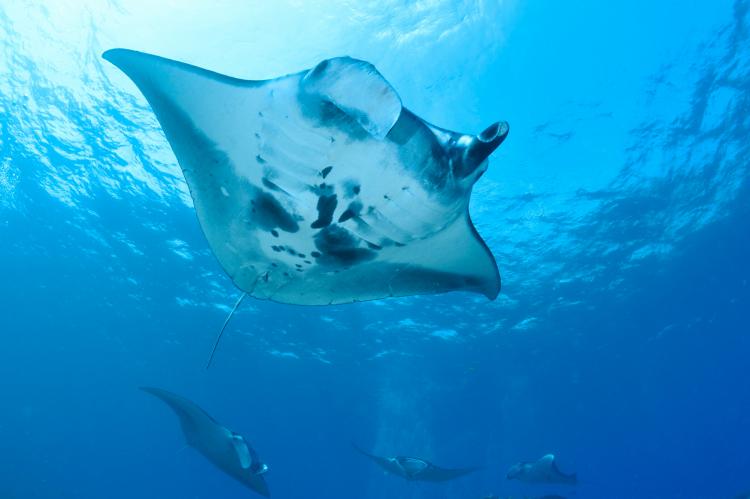Ultrasound scanning of wild reef manta rays
A pregnant wild reef manta ray has been successfully scanned by researchers from Manta Trust and the University of Cambridge. By using the world’s first contactless underwater ultrasound scanner, scientists were able to get clear ultrasounds images of the manta’s fetus.
The team of researchers is studying reef manta rays in the Maldives in south Asia, where the largest populations are found. It is hoped that the research project will reveal what causes annual fluctuations in breeding and why mantas breed in some areas and not others.
Close relatives to sharks and rays, mantas can grow up to 7m in width and up to two tons in weight, but are gentle giants.
“Manta rays are one of the most beautiful and iconic creatures that swim in our oceans,” said Dr Gareth Pearce of the Department of Veterinary Medicine at the University of Cambridge. “Unfortunately, like many animals, their future is threatened. They are increasingly fished, both deliberately and through bycatch and their populations are now at risk.” Pearce added, “Using the scans, we’re able to determine the stages of maturity and when animals are becoming reproductively active. We can observe the stages of pregnancy, the development of the fetus and importantly, whether an animal maintains that pregnancy and gives birth to a live animal.”
To see a video of how the underwater scanning of mantas is done, go to: https://bit.ly/2PtKiQG


